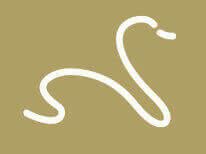Blur As Design
Some artists use use blurring to create award-winning images. Ralph Bergman’s award-winning picture of fuzzy black trees on a white background is stunning, and proves that there is a place for blurriness in photographic work.
Blur As Fashion
It is fashionable to overexpose pictures of moving water so that the water will be blurred. The problem is that this overexposes, and blurs, everything else in the picture.
When researching printers, one manufacturer send me a print sample which fashionably blurred moving water. But the over-exposure meant that the forest leaves were moving too, so they were also blurred. My reason for getting the print sample was to see how crisply the printer could render my images, so that print sample told me nothing.
Panoramas Need Crisp Detail
For my panoramas, I want viewers to engage a picture from afar, seeing a big scene, then move in closer and closer as it reveals ever-increasing levels of detail. So when it comes to my panorama pictures, blur is my enemy.
When I take a shot, I want you to be able to see the roughness of the bark on the trees, to see each bubble in the foam of the wave, to see individuals walking the street of a city, to feel the bumps in the paint on the side of a fishing boat.
